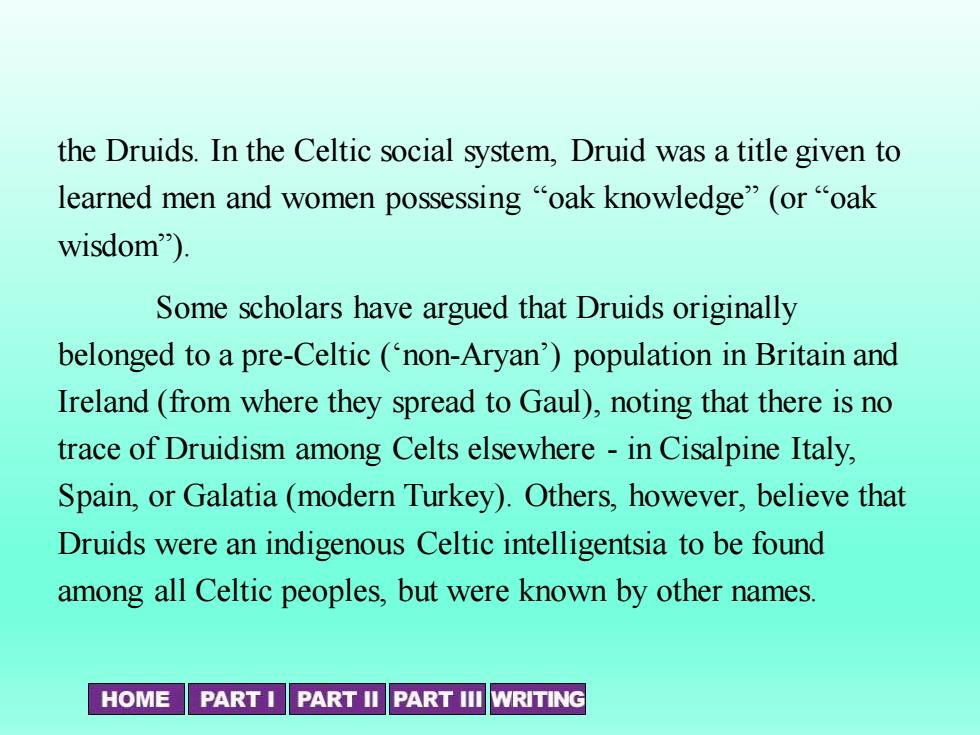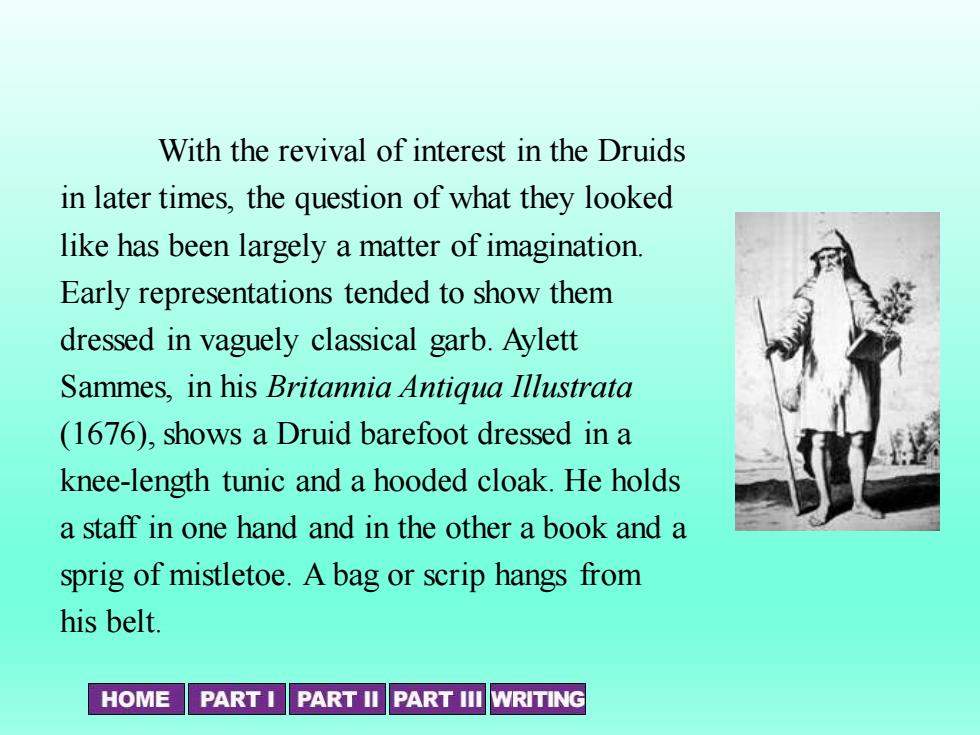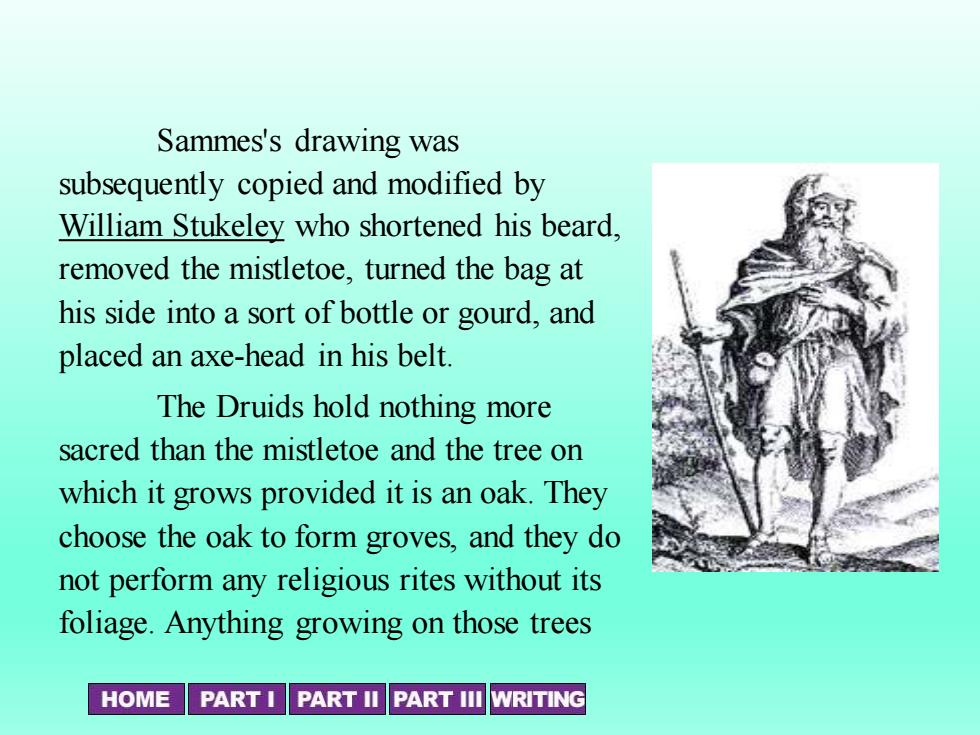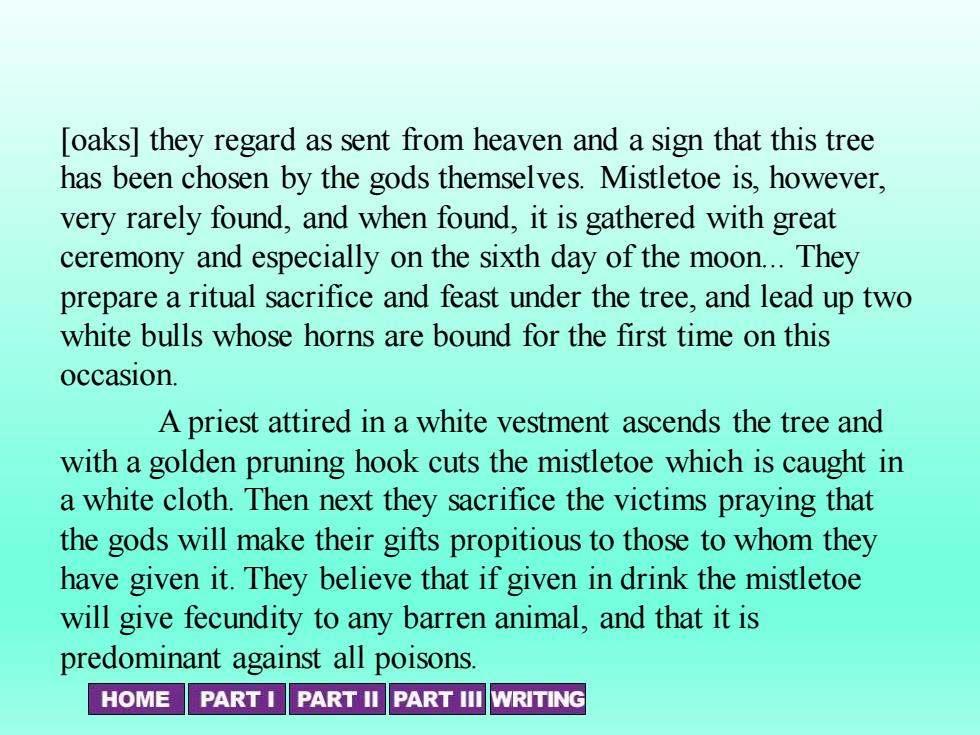
the Druids.In the Celtic social system,Druid was a title given to learned men and women possessing "oak knowledge"(or"oak wisdom). Some scholars have argued that Druids originally belonged to a pre-Celtic(non-Aryan)population in Britain and Ireland (from where they spread to Gaul),noting that there is no trace of Druidism among Celts elsewhere-in Cisalpine Italy, Spain,or Galatia(modern Turkey).Others,however,believe that Druids were an indigenous Celtic intelligentsia to be found among all Celtic peoples,but were known by other names. HOME
the Druids. In the Celtic social system, Druid was a title given to learned men and women possessing “oak knowledge” (or “oak wisdom”). Some scholars have argued that Druids originally belonged to a pre-Celtic (‘non-Aryan’) population in Britain and Ireland (from where they spread to Gaul), noting that there is no trace of Druidism among Celts elsewhere - in Cisalpine Italy, Spain, or Galatia (modern Turkey). Others, however, believe that Druids were an indigenous Celtic intelligentsia to be found among all Celtic peoples, but were known by other names

With the revival of interest in the Druids in later times,the question of what they looked like has been largely a matter of imagination. Early representations tended to show them dressed in vaguely classical garb.Aylett Sammes,in his Britannia Antiqua Illustrata (1676),shows a Druid barefoot dressed in a knee-length tunic and a hooded cloak.He holds a staff in one hand and in the other a book and a sprig of mistletoe.A bag or scrip hangs from his belt. HOME PART IPART II PART IIIWRITING
With the revival of interest in the Druids in later times, the question of what they looked like has been largely a matter of imagination. Early representations tended to show them dressed in vaguely classical garb. Aylett Sammes, in his Britannia Antiqua Illustrata (1676), shows a Druid barefoot dressed in a knee-length tunic and a hooded cloak. He holds a staff in one hand and in the other a book and a sprig of mistletoe. A bag or scrip hangs from his belt

Sammes's drawing was subsequently copied and modified by William Stukeley who shortened his beard, removed the mistletoe,turned the bag at his side into a sort of bottle or gourd,and placed an axe-head in his belt. The Druids hold nothing more sacred than the mistletoe and the tree on which it grows provided it is an oak.They choose the oak to form groves,and they do not perform any religious rites without its foliage.Anything growing on those trees HOME PART IPART IIPART IIIWRITING
Sammes's drawing was subsequently copied and modified by William Stukeley who shortened his beard, removed the mistletoe, turned the bag at his side into a sort of bottle or gourd, and placed an axe-head in his belt. The Druids hold nothing more sacred than the mistletoe and the tree on which it grows provided it is an oak. They choose the oak to form groves, and they do not perform any religious rites without its foliage. Anything growing on those trees

[oaks]they regard as sent from heaven and a sign that this tree has been chosen by the gods themselves.Mistletoe is,however, very rarely found,and when found,it is gathered with great ceremony and especially on the sixth day of the moon.They prepare a ritual sacrifice and feast under the tree,and lead up two white bulls whose horns are bound for the first time on this occasion. A priest attired in a white vestment ascends the tree and with a golden pruning hook cuts the mistletoe which is caught in a white cloth.Then next they sacrifice the victims praying that the gods will make their gifts propitious to those to whom they have given it.They believe that if given in drink the mistletoe will give fecundity to any barren animal,and that it is predominant against all poisons. HOME PART I PART II PART IIIWRITING
[oaks] they regard as sent from heaven and a sign that this tree has been chosen by the gods themselves. Mistletoe is, however, very rarely found, and when found, it is gathered with great ceremony and especially on the sixth day of the moon. They prepare a ritual sacrifice and feast under the tree, and lead up two white bulls whose horns are bound for the first time on this occasion. A priest attired in a white vestment ascends the tree and with a golden pruning hook cuts the mistletoe which is caught in a white cloth. Then next they sacrifice the victims praying that the gods will make their gifts propitious to those to whom they have given it. They believe that if given in drink the mistletoe will give fecundity to any barren animal, and that it is predominant against all poisons